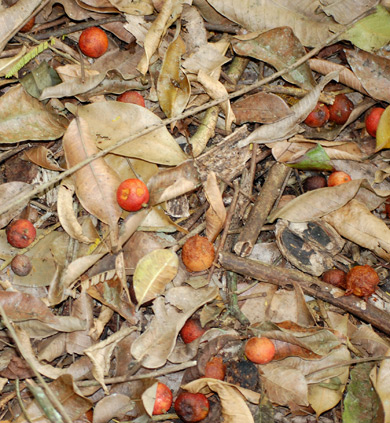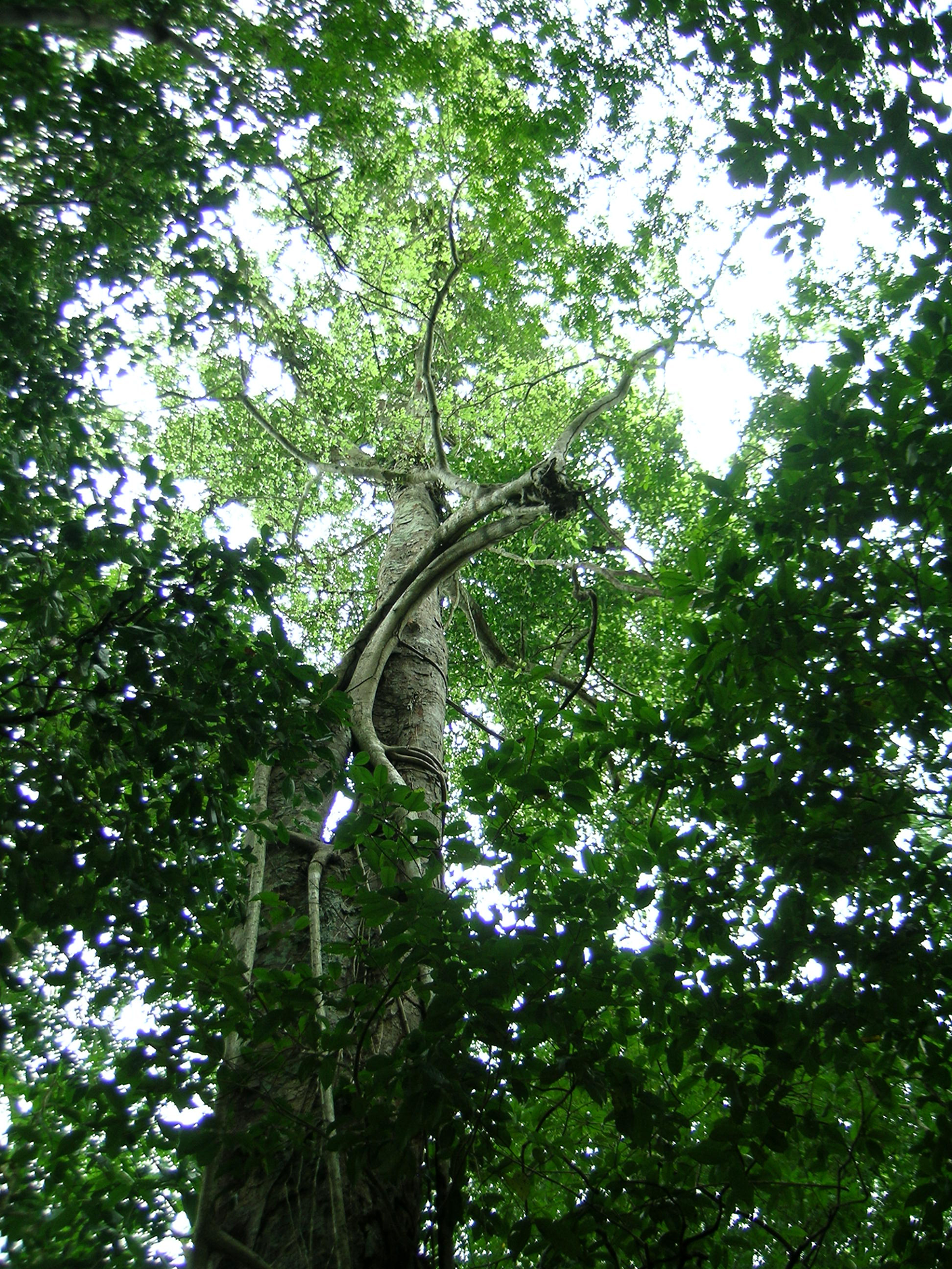Breadnut
Scientific Name: Brosimum alicastrum
Climate: Warm and temperate soil up to 800 m altitude. It adapts well to humid, sub-humid and semi-arid climates
Plant Description: These trees can be large (40m) in the forest or small with pruning. They are native to southern Mexico and Central America.
Cultivation: It grows best in hot and temperate weather, up to 800 m altitude. It adapts well to humid, sub-humid and semi-arid climates. It requires pure shade when young; then lots of sun. Once established, it does not need watering. Breadnut grows best in rich soils that have been inoculated with mycelium from a mature breadnut tree.
When the baby trees are one meter high, they can be planted at a distance of four to six meters in plantation for human food. For intensive fodder plots for cows, they can be planted in rows at a distance of 1.5 to 2 m, with 25-30 cm between plants, or scattered in the plot or food forest.
The nuts are collected from the ground in May and June. They need to be used immediately, or dried very carefully in the shade without storing them in bags. If they are placed in bags before they are completely dry (as people do to prepare coffee), the seeds will quickly rot.
Many people in Chiapas harvest it using a machete to cut the branches full of nuts. Even if the plant survives and can be reused for fodder, production of nuts for human consumption will be very limited. Therefore, it is best to keep some trees for animal feed and others for family consumption. These trees also attract many types of animals that come to eat the nuts.
 Uses: It is excellent human food. The roasted seeds can be eaten, ground into tortillas, or made into a drink. It was an important food in ancient Mayan culture and in modern times during emergencies and prolonged political struggles such as in Nicaragua, Guatemala and El Salvador. The seeds are rich in calcium, protein, iron and vitamin C. The seeds and latex stimulate human milk production. Wood is used for general construction and as flooring, craft materials, tool handles, furniture, and as pulp for paper. The fruit pulp is edible, its leaves are excellent fodder for cattle, goats, horses and pigs. It is also good for reforestation and rehabilitation of tired soil.
Uses: It is excellent human food. The roasted seeds can be eaten, ground into tortillas, or made into a drink. It was an important food in ancient Mayan culture and in modern times during emergencies and prolonged political struggles such as in Nicaragua, Guatemala and El Salvador. The seeds are rich in calcium, protein, iron and vitamin C. The seeds and latex stimulate human milk production. Wood is used for general construction and as flooring, craft materials, tool handles, furniture, and as pulp for paper. The fruit pulp is edible, its leaves are excellent fodder for cattle, goats, horses and pigs. It is also good for reforestation and rehabilitation of tired soil.
Pests and Diseases: The breadnut can survive even after ants cut all the leaves off a young tree. It also tolerates drought and sun better than many other trees.
En español: Ramón o Ax

